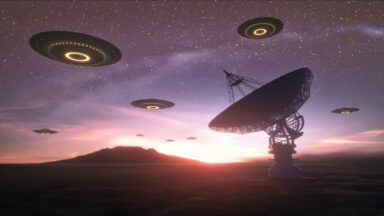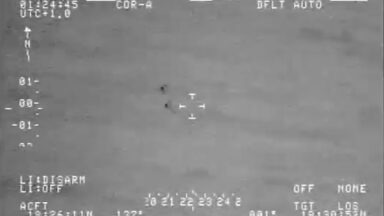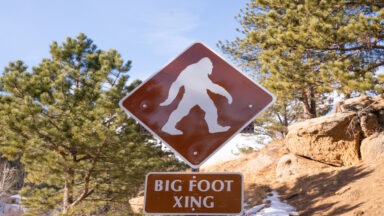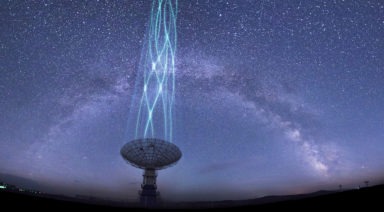Pentagon UFO Program Shows Clandestine Government Investigation

The recent revelation of a clandestine government program funded to study UFO phenomena has come as a surprise to many. As reported in the New York Times and Politico, a black budget operation was created to look into a multitude of reports detailing military and civilian encounters. This Pentagon UFO program ran from 2008 to 2012 at the request of then-Senate Majority Leader, Harry Reid, in search of a definitive answer to the phenomenon.
The Pentagon’s Black Budget
The U.S. government spends a large portion of its budget on defense. In fact, about half of discretionary spending – amounting to over half a trillion dollars – goes to Defense Department programs, funding operations at the CIA, NSA, Justice Department, and several other agencies. Of that money, over $50 billion is spent on covert operations, undisclosed to the public.
Before this elusive allocation was exposed by Edward Snowden, the majority of this money was being used for surreptitious data collection programs used ostensibly for counter-terrorist measures. Though it’s likely that nothing has changed in that regard, the latest leak to come from this budget details a five-year program, that may or may not be ongoing, which earmarked $22 million for the study.
The Advanced Aerospace Threat Identification Program, or AATIP, was funded at the behest of Senate Majority Leader Harry Reid between 2007-2012. Reid, along with fellow congressional members, Ted Stevens (R.-AK) and Daniel Inouye (D.-HI) allocated the money for Bigelow Aerospace, a private contractor working with NASA, founded by billionaire hotel magnate Robert Bigelow.

Senator Harry Reid
The program involved a small group of government employees at the Defense Department working in conjunction with Bigelow to study first-hand experiences by military servicemen, civilian experiences, and a trove of metal alloys recovered from the UFOs in question.
Based on the testimony of former intelligence official, Luis Elizondo, the program picked up where Project Blue Book left off in the late ‘60s, when it concluded that most UFO phenomena could be written off as having a mundane explanation, despite over 700 sightings that remained officially unexplained.
Revelatory reports surfaced this past weekend in The New York Times and Politico sparking subsequent stories across nearly every mainstream media outlet. The exposé came as the first major announcement from To the Stars Academy, a consortium of former high-level government employees and aerospace engineers working with former rock star, Tom DeLonge, to investigate the UFO phenomenon.
UFO Sightings and the Expected Response
Several videos accompanied the reporting this past weekend, showing spacecraft that elicited shocked responses from highly trained naval commanders. The videos were taken by pilots of F/A-18f Super Hornets who encountered spacecraft seeming to defy the laws of physics. These craft did not show signs of traditional jet propulsion or wings and flew at speeds never before seen.
Another article appeared in the Times the same day, which detailed the experiences of two pilots, Cmdr. David Fravor and Lt. Cmdr. Jim Slaight who were flying reconnaissance missions off the coast of San Diego from the U.S.S. Princeton. The Princeton had been tracking these mysterious aircraft for a few weeks, before their encounter that day in 2004.

courtesy nytimes.com
While on a routine mission, the two were told about a “real-world vector” at 80,000 feet. When they approached the UFO, it dropped out of sight, before they realized it was hovering 50 feet above the ocean, creating some sort of disturbance in the water. When the pilots attempted to reach the object again it shot off. Fravor and Slaight then began their return to a rendezvous point some 60-miles away, before the operations officer on board the Princeton notified them that the UFO was already hovering there.
The object was gone by the time they returned and no one was able to explain what it was. Aside from the video released by the DoD, there is no other record or explanation of what the object was. When the pilots returned to the Princeton, they were teased by their shipmates for having seen UFOs, an unsurprising reaction that is part of a systemic stigmatization when it comes to reporting such experiences.
Seth Shostak, senior astronomer for the SETI Institute at UC Berkeley, criticized the program for allowing Bigelow to direct its efforts. He criticized the billionaire for his long-held belief that we have been visited by extraterrestrials.
Shostak, himself, is in charge of a program searching for extraterrestrial intelligence in the universe. He also criticized the program for its use of $22 million in taxpayer money that “didn’t come up with anything.” Despite the video evidence and “reams of paperwork,” according to the report by Politico.
Aside from the fact that $22 million dollars is relatively insignificant in a $52 billion budget of undisclosed money, otherwise going toward weapons and surveillance, it’s strange that Shostak would be so quick to shoot down a project that has the same goals as his. Those $22 million dollars spent over the course of the program would amount to about a penny per year for individual American taxpayers.
Shostak’s sentiment may seem to some as perpetuating the stigma that prevents those who have had UFO experiences or bizarre encounters from talking about them. Bigelow, in the New York Times interview mentions this, stating he believes the U.S. perpetuates a culture of stigmatization in which a juvenile taboo keeps scientists from speaking out for fear of being ostracized.

Billionaire Robert Bigelow
Though Shostak and other skeptics criticize Bigelow for his eccentric views and lack of a scientific background, Bigelow Aerospace is currently contracted with NASA, having successfully inflated it’s novel BEAM module on the ISS.
Working in conjunction with NASA and Space-X merits some credit for a company that is receiving funding to study UFO phenomena, especially if it could potentially be considered a threat to security. And that was the reason Senator Reid and his compatriots were awarded the money in the first place, though virtually all of the military servicemen who experienced the phenomenon claimed that the UFOs did not appear to pose a threat.
It’s unclear whether the Pentagon is continuing to fund the AATIP, but Elizondo says he had a successor and believed it to remain in existence to this day. Whether the recent media hype will encourage the government to look deeper into this phenomenon remains to be seen. Meanwhile, To the Star Academy promises to continue publicizing its findings.
The Senate Is Unhappy With the Intelligence UFO Report, Demands More
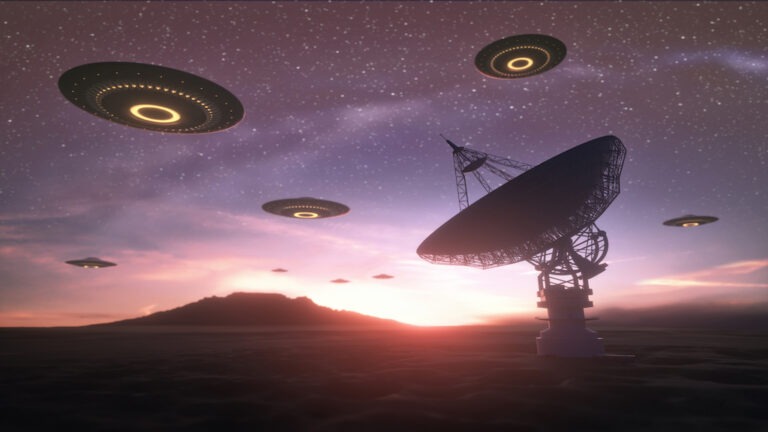
Congress is doubling down on UFO legislation — first the House and now the Senate is demanding answers going back decades.
Members of Congress who are not pleased with the lackluster response from security agencies and the Department of Defense’s response to last year’s UFO-related legislation called for sweeping changes and oversight to the reporting of UFO activity. They just passed even stronger language in the Intelligence Authorization Act for 2023.
Mirroring the House legislation, the Senate would also create a “secure system” for reporting UAPs, as well as loosen the restrictions on, or release people from, non-disclosure agreements. It also calls for a deep dive into how UAP-related activities were handled by the government dating back to 1947.
So what makes this bill so groundbreaking? Nick Pope served with the UK’s Ministry of Defense covering UAP activity.
“We now have some really strong language in the draft Intelligence Authorization Act for fiscal year 2023. The bottom line is that Congress is continuing to say to the DoD and intelligence community, ‘we want action on the UAP issue,’ and they are clearly not letting it go, and the language is robust. They are articulating a number of must-haves here that we have not seen before.”


